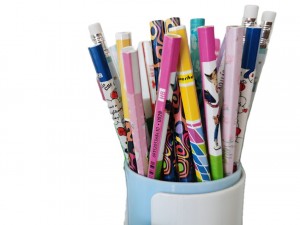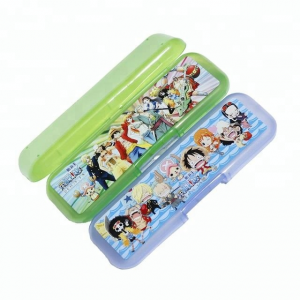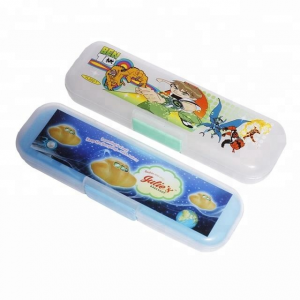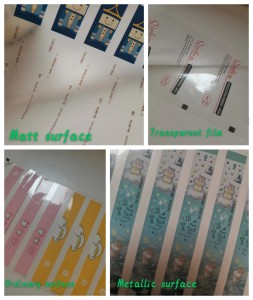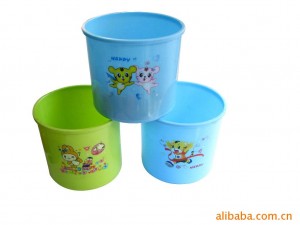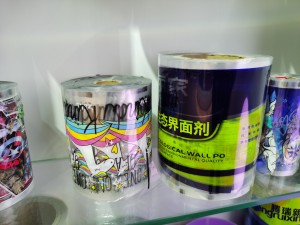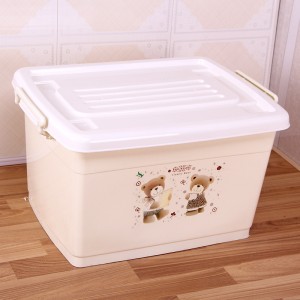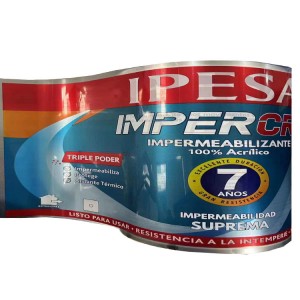Factory supply heat transfer film label sticker for plastic pen
Product description
Heat transfer film is a thin and flexible material that adheres to a variety of surfaces by applying heat and pressure. It is commonly used in the fashion industry to transfer designs or patterns onto fabrics, such as t-shirts, hats, and bags.
Heat transfer film offers a wide range of benefits, including cost-effectiveness, durability, and versatility. It is easy to customize and requires minimal equipment, making it a popular choice for small businesses and individuals.
In addition to the fashion industry, heat transfer film is used in a variety of applications, such as automotive and electronics manufacturing. It is an effective way to apply labels, logos, and other markings onto products without the need for complex printing or etching processes.
Overall, heat transfer film is a valuable tool for businesses and individuals looking to add design elements or branding to their products quickly and efficiently. Its ease of use, durability, and versatility make it a popular choice for a wide range of applications.
Product show




Production process
Heat transfer films are widely used in modern industry, fashion, and printing. It is produced using advanced technology and a unique process that ensures high-quality and durability. The production of heat transfer film involves a series of steps, including the preparation of materials, image printing, and lamination.
Firstly, high-quality materials are sourced and prepared for use in the film production process. These materials include transfer vinyl, inkjet vinyl, rolling vinyl, and self-adhesive vinyl. The production team must ensure that these materials meet the required standards and specifications for the project.
Next, images are printed onto the film using modern printing equipment, such as a digital printer, sublimation printer, or screen printer. The printing process ensures that the colors are vibrant and the images are clear and sharp. This step is crucial in the production of heat transfer film as it determines the quality of the final product.
After the printing process, the film is laminated to a carrier material, which provides support and stability. The lamination process ensures that the film adheres to the carrier material and is free from any creases or wrinkles. The carrier material is then cut into the desired shape and size to prepare the final heat transfer film product.
In conclusion, the production of heat transfer film involves a complex and technical process that requires expertise and precision. However, with the right materials, equipment, and techniques, high-quality and durable heat transfer films can be produced. Heat transfer films have revolutionized the printing industry and have become an essential tool for many industries, including textiles, automotive, and signage.

Company profile
Decai Honorise is a leading manufacturer of heating transfer field, one-stop service comprehensive enterprise. The products involves the following major aspects:High-precision hot stamping silicone rubber roller and wheel、gravure printing rubber roller and various industrial rubber rollers,Thermal transfer film labels and in-mold labeling,Heat transfer machine and hot stamping machine.Integrating production, sales and R&D together. In strict accordance with printing industry standards for production and management. We're own scientific formula, precise processing methods and superb grinding technology, we provide high-quality products with advanced production equipment and strong technical force.
FAQ
1.Are you a manufacturer?
2.Can you provide samples?
Yes, we can provide you samples for quality checking. Please let us know your requirements, then we can arrange samples according to your requirements. Our samples are free, but the delivery charge is on your side. 3.How can we guarantee quality?
Always a pre-production sample before mass production;Always final Inspection before shipment.
4.What is "heat transfer printing' ?
Heat transfer printing utilizes high-quality gravure printed on a clear carrier that are permanently bonded to a part by the heat and pressure of the heat transfer process. Since heat transfer label are preprinted, multicolor images are transferred to the part in one pass.
5.How to use heat transfer printing ?
1)firstly you must have a heat transfer printing machine, we also produce this machine
3) your product should have smooth surface(flat or round conical shape)
6.This is the first time to buy, what information I need to provide in order to get a price?
1)Material of your product
2)Size of the film /your product
3)do you have own orginal design?
4) Order quantity
5)If possiable pls send sample product to us7.How can we contact you as soon as possible?
We are always available on Alibaba.com, WhatsApp, Wechat. You can also reach us by email. You are welcome to send us any questions anytime and we will reply you.


